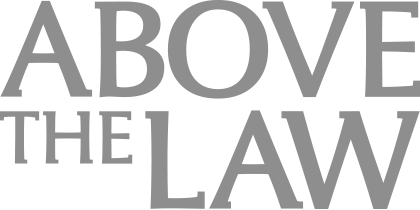Bigger & Shinier: An Exploration Of Legal Tech
The story of the bigger and shinier in legal technology is an evolving, long-term tool that can likely replace lawyers in many ways. And in those ways it can't, it should start.
 Earlier today I sat in on a panel about the newer and betterer in legal technology. That’s the purpose of ILTACON. It gives voice to the voiceless coders and designers trying to turn mindless plodding work into efficiently performed work.
Earlier today I sat in on a panel about the newer and betterer in legal technology. That’s the purpose of ILTACON. It gives voice to the voiceless coders and designers trying to turn mindless plodding work into efficiently performed work.
Or create the robot apocalypse.
But let’s be fair, given the technological difficulties this panel faced, I think we’re all safe from the apocalypse for a few more years.

Data Privacy And Security With Gen AI Models
https://twitter.com/rmcclead/status/763402226656223232
Some early social media fail. Don’t worry it’s quickly followed by basic technology fail.
Swing and a miss!
Sponsored

Curbing Client And Talent Loss With Productivity Tech

How Thomson Reuters Supercharged CoCounsel With Gen AI Advances


Legal Contract Review in Under 10 Minutes? Here’s How

Tackling Deposition Anxiety: How AI Is Changing The Way Lawyers Do Depositions
Um. OK. Actually this statement from moderator Ryan McLead of HighQ ultimately made a lot of sense strategically if not grammatically. His point was to warn against viewing innovation as static as opposed to a dynamic process. Fair enough. It’s still a noun though.
Then he explained that innovation is like laundry.
Well, no, actually:
Sponsored

Tackling Deposition Anxiety: How AI Is Changing The Way Lawyers Do Depositions

Data Privacy And Security With Gen AI Models
And then we get our first invocation of naked lawyers. No one will ever forgive Ryan McLead:
But what really is innovation. McLead thinks it’s the result of getting folks to work together. He doesn’t make the pop culture reference, but this is what he’s talking about:
Noah Waisberg of Kira Systems took the floor:
But seriously, Waisberg’s principle point is that, when you cut out the hype machine, technology isn’t really revolutionary.
Indeed. This is a theme that Nicole Bradick of Curo hit upon when she explained that:
Indeed. And her plan for coaxing folks into adoption is:
Perhaps I evoked that Office Space meme too quickly. Figure out what people might want before building it… it’s a novel concept with a lot of technology, but a key issue when it comes to adoption.
Joshua Lenon of Clio took the podium to take both of these themes and keep running with them.
It’s all about the timeline of legal innovation. According to Lenon, part of the problem — harkening back to Waisberg’s point about “revolutions” — is that technology markets itself as a “bigger and shinier” product to roll out next week, when the more prudent technologist needs to cut through marketing and see the smart investment in something that’ll roll out in 5-10 years.
Then…
While I was hoping to live tweet a rap battle, it turns out Michael Mills of Neota Logic was going to be even more interesting. Blowing off the innovation-centric focus of the other speakers, he took the discussion into what we should be doing with that technological know-how.
This again highlights the importance of “Low Bono” providers and how technology misses that niche because it just doesn’t pay the bills.
Meanwhile Biglaw is getting away with every innovation they want:
And that’s when Mills took the issue directly to the attendees:
Lawyers have obligations — often ignored or downplayed — to address access to justice issues and yet legal technology can aid the poor and middle class directly as well and Mills thinks an organization like ILTA needs to recognize its power to fill this need and place the same sorts of obligations upon legal technologists to help.
In the end, this is the story of the bigger and shinier in legal technology: an evolving, long-term tool that can likely replace lawyers in many ways. And in those ways it can’t, it should start.







